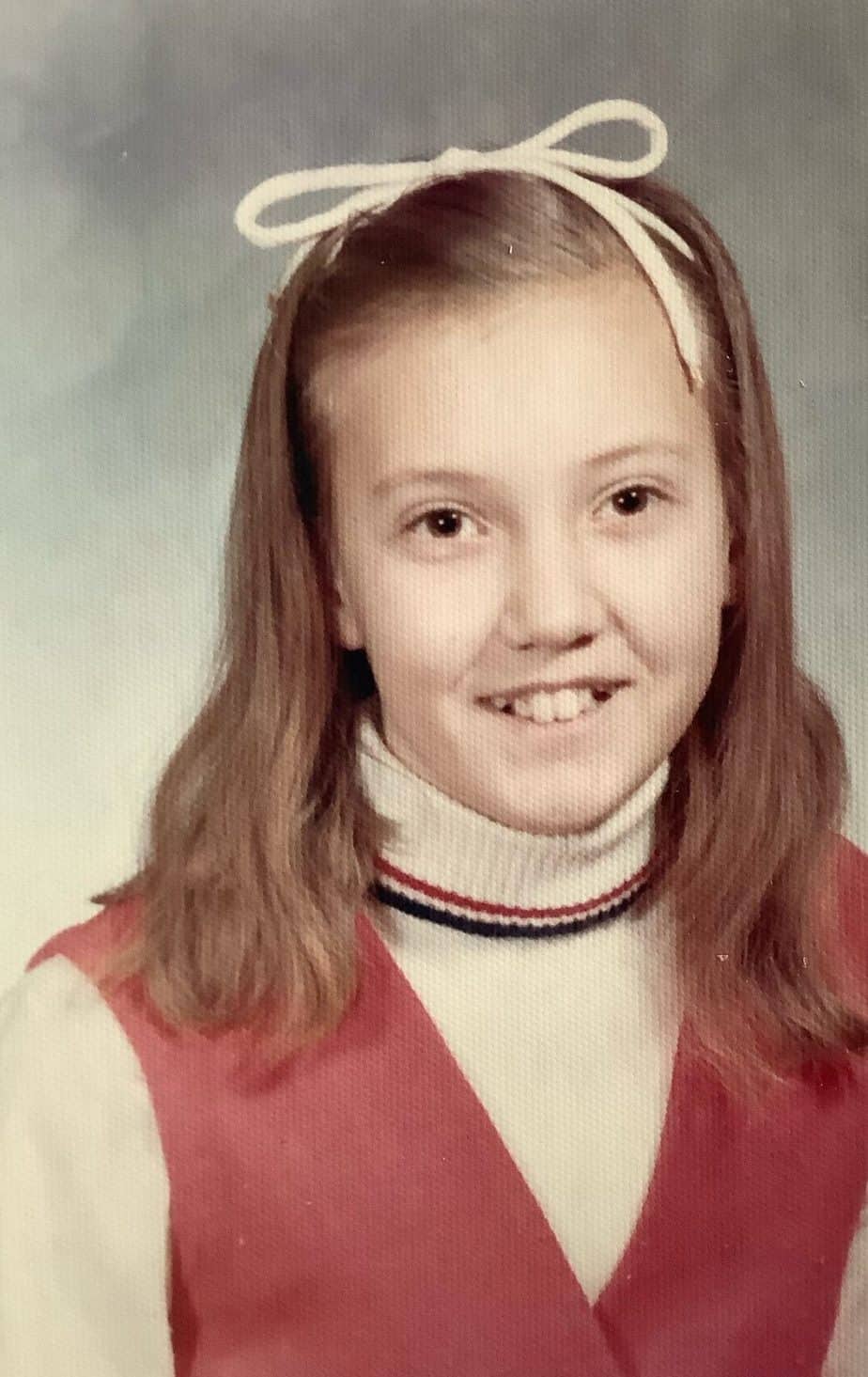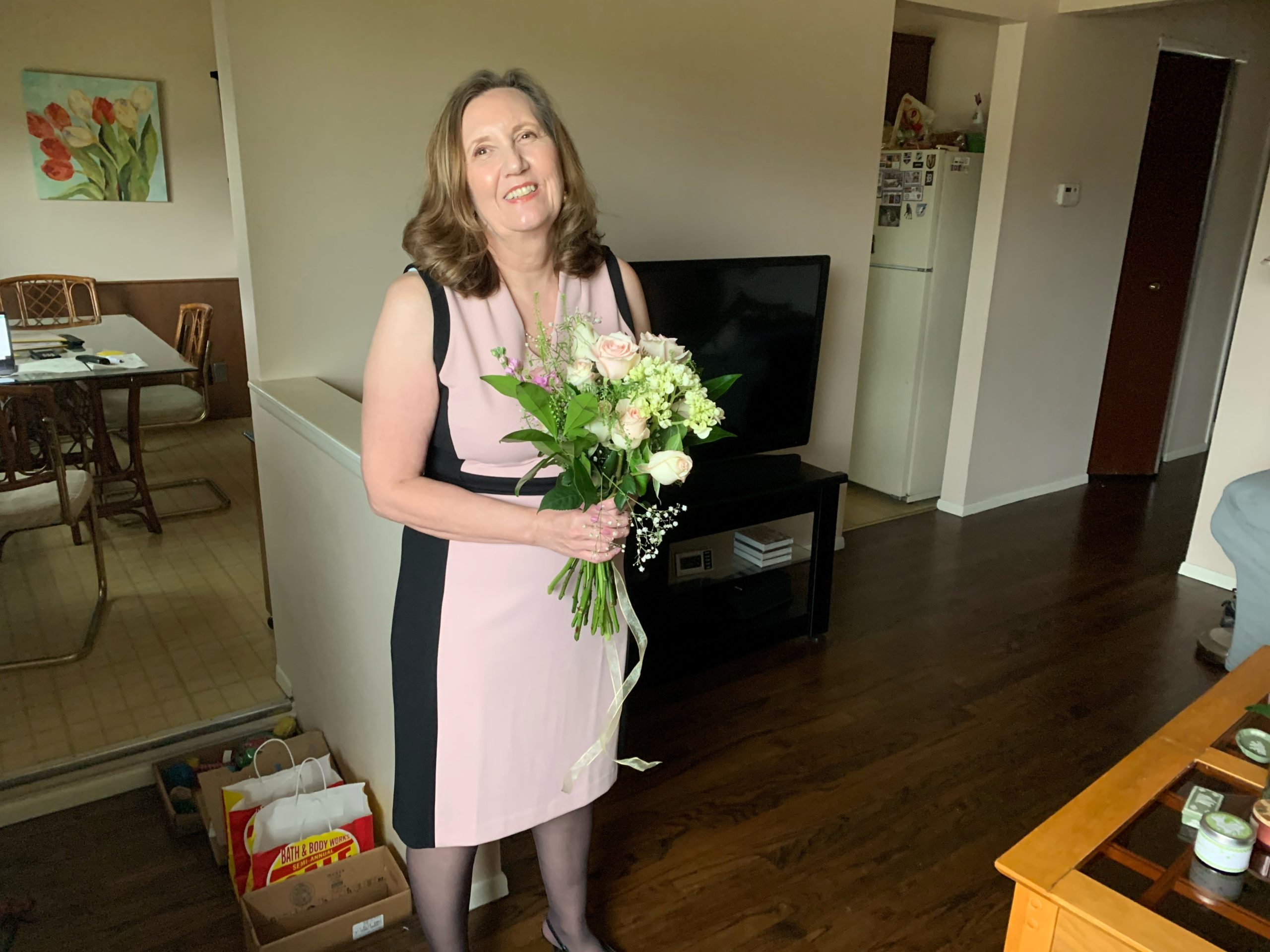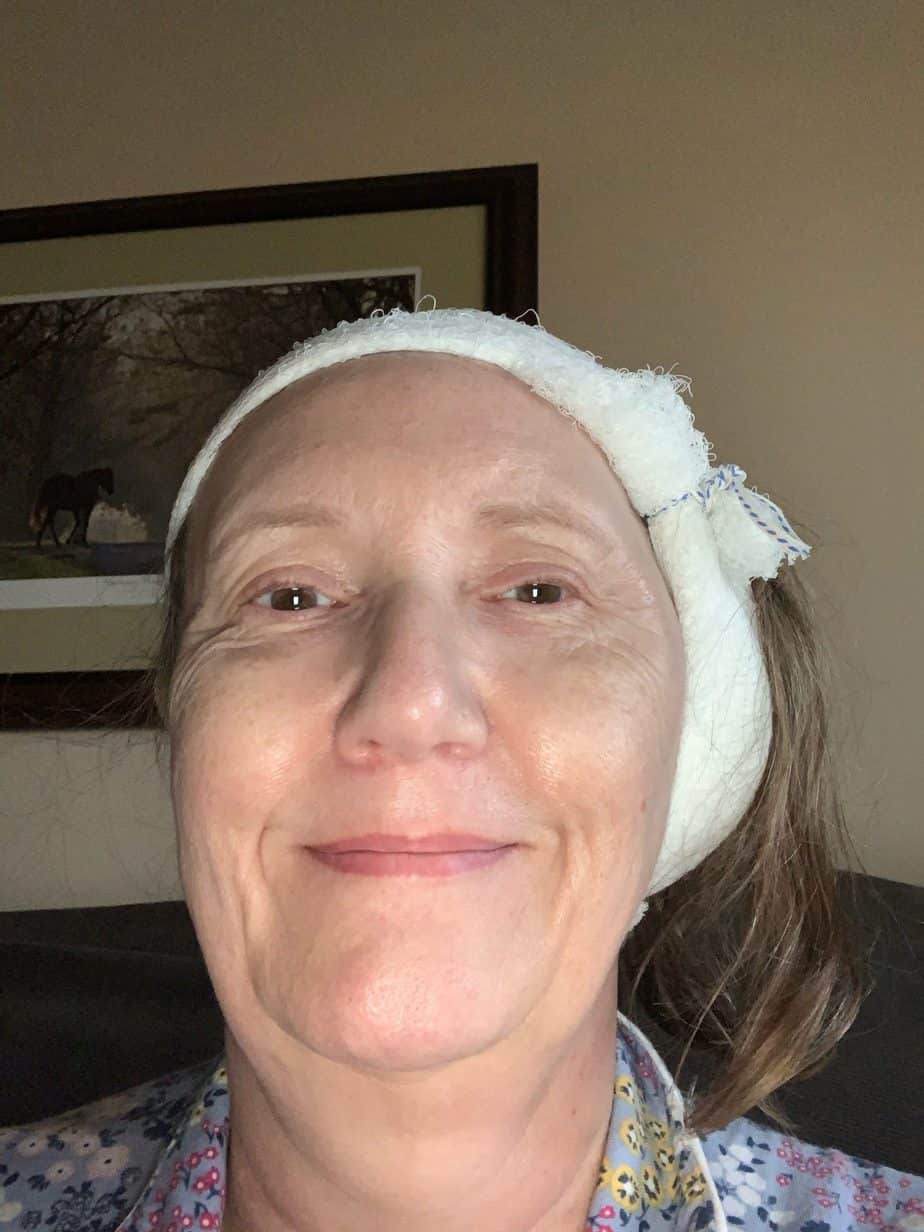Angela struggled with hearing loss in one ear since her cholesteatoma was diagnosed in 1970. After multiple procedures and being told there was nothing she could do for her hearing loss, she adapted. When seeing a new audiologist, Angela learned about bone conduction technology and decided to get the new Cochlear™ Osia® System. She is now looking forward to her new hearing:
“I am a recent recipient of the Cochlear Osia System. I was diagnosed with a cholesteatoma in my left ear in 1970 at age 12. I underwent a canal wall down procedure, all the structures in my middle ear were removed and I developed conductive hearing loss. Six months later, I underwent a second procedure.
 Following surgery, my parents asked about a hearing aid and were told that it wouldn’t work for me. I was told to simply not get my ear wet, to sit at the front of the classroom and to the left of the teacher. I gradually learned to adapt on my own.
Following surgery, my parents asked about a hearing aid and were told that it wouldn’t work for me. I was told to simply not get my ear wet, to sit at the front of the classroom and to the left of the teacher. I gradually learned to adapt on my own.
I could only use the phone on my right ear, and I would try to sit or stand on the left of people. It was difficult in crowded spaces or if someone was standing behind me. It became normal for me and most of the time, I didn’t think about having hearing loss. I would tell some people that I was particularly close to but didn’t think to mention it to most people. I finished school, became a nurse, had varied interests and became involved in community theatre.
Learning about bone conduction technology
 Because of the surgeries, I periodically followed up with ear nose and throat doctors (ENTs). In March of 2019, I was looking for a new ENT for a checkup and found a doctor who is actually a neurotologist. At my appointment I met with the audiologist for a hearing test. This was pretty standard for me, so I didn’t think much of it. After the hearing test, she asked me if I’d ever considered hearing correction. I was very surprised because I hadn’t known that was possible. I met with my neurotologist and we discussed the Cochlear Baha® System.
Because of the surgeries, I periodically followed up with ear nose and throat doctors (ENTs). In March of 2019, I was looking for a new ENT for a checkup and found a doctor who is actually a neurotologist. At my appointment I met with the audiologist for a hearing test. This was pretty standard for me, so I didn’t think much of it. After the hearing test, she asked me if I’d ever considered hearing correction. I was very surprised because I hadn’t known that was possible. I met with my neurotologist and we discussed the Cochlear Baha® System.
It took a while for me to decide. At first, I wasn’t sure if it was necessary because I was so used to functioning with hearing in one ear. I read a lot about the Baha System. I started paying more attention to situations in which it was difficult to hear. I began to realize that I probably wasn’t functioning as well as I thought. There were a lot of situations in which I didn’t respond to people or gave them the wrong answer. When discussing this with a coworker, she told me, ‘That explains why you never used to respond to me when I said good morning to you. You never heard me.’
Learning about the Cochlear Osia System
 I was scheduled to receive the Baha Implant and a couple weeks before surgery, I got a call from my neurotologist and she gave me the option to wait until the Osia System was available at the hospital. Since I had waited that long, it made sense to wait a little longer.
I was scheduled to receive the Baha Implant and a couple weeks before surgery, I got a call from my neurotologist and she gave me the option to wait until the Osia System was available at the hospital. Since I had waited that long, it made sense to wait a little longer.
We expected it to be available near the end of the year. It took even longer for my local health system to obtain it. I saw my neurotologist in early March 2020 and scheduled surgery for May 14. Soon after that, all elective surgeries were cancelled due to COVID-19. When elective surgeries resumed again, my neurotologist was on maternity leave. The surgery was finally scheduled for September 4, 2020. By that time, it had been 50 years since I had first lost my hearing.
One of the first patients to receive an Osia System
 The surgery went smoothly, and I found out when I woke up in recovery that I was the first patient to receive a Cochlear Osia System at my hospital. I had a dressing around my head. I’m a big horse racing fan and the day after surgery was Kentucky Derby Day (postponed due to COVID). I sent a picture to a couple of family members labelled ‘My Derby hat.’
The surgery went smoothly, and I found out when I woke up in recovery that I was the first patient to receive a Cochlear Osia System at my hospital. I had a dressing around my head. I’m a big horse racing fan and the day after surgery was Kentucky Derby Day (postponed due to COVID). I sent a picture to a couple of family members labelled ‘My Derby hat.’
On October 13, 2020, I saw my audiologist and received my Osia Sound Processor. Walking out of the office, everything seemed loud. I heard doors, paper rustling, traffic, the car door slamming and the key in the ignition. It was overwhelming at first, but I quickly adapted. Two days later I got married in a very small informal ceremony in our backyard. I made sure my husband stood on my left during the ceremony so that I could hear his vows through my left ear.
I am adjusting well. I find it easier to watch TV now. I stream my phone calls to my sound processor1. It also makes it easier on Microsoft® Teams2 calls if a lot of people are on the call. I haven’t yet been able to take full advantage of it due to COVID restrictions. I’m still working remotely and do not go into crowded spaces. As things improve, I hope to be able to attend the theatre, go to restaurants and travel. I‘m looking forward to experiencing my improved hearing in those situations.”
Are you struggling with conductive hearing loss? Have you heard about bone conduction technology? Learn about the Cochlear Osia System today.
- For compatibility information visit www.cochlear.com/compatibility
- © Microsoft 2021